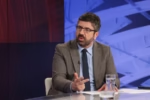In a sobering essay, historian and diplomat Milan St. Protić argues that Serbia is sliding toward dictatorship — not because institutions suddenly failed overnight, but because power has been systematically usurped and concentrated in the hands of a single leader. This is not a partisan gripe; it is a structural diagnosis of a political system that allowed a return of personal rule after the nominal hopes of the post‑2000 era.
Usurpation of power: the core problem
Protić identifies the core problem as the usurpation of state power: one person has subordinated public institutions, politicized the judiciary, captured media, and turned the machinery of state into an extension of his personal will. “We stagnate and lose race after race because we are enslaved to the will of one man,” he writes. That concentration of power, he warns, is precisely the condition that transforms electoral politics into a façade and makes democratic change nearly impossible.
History shows few voluntary exits from power
Protić reminds readers that only a handful of leaders in Western history voluntarily relinquished power (e.g., Washington, de Gaulle). Most rulers who amassed unchecked authority did not leave by democratic means — and even popular uprisings frequently produced new autocrats. The lesson: institutions matter more than personalities; if institutions are hollowed out, change cannot be secured by elections alone.
Why Serbian democracy failed to consolidate
The author traces the issue back to the incomplete transformation after the 1990s. Although Serbia experienced democratic openings, the political system inherited from Milošević never changed at its core. The formal trappings of democracy survived, but the habit of personal rule persisted — and the political environment allowed an ambitious successor to seize effective control. Protić calls this pattern endemic, not accidental: recurrent across generations and resilient to periodic protests.
Protests and resistance — necessary but insufficient
Protić praises the resilience of civic resistance — from 1989 protests to the recent year‑long student movement — but cautions that repeated demonstrations have not yet produced systemic change. He argues that the current protest demands are strategically diffuse: they call for new elections and reforms that remain dependent on the goodwill of the very person who consolidated power. This, he says, is a tactical mistake.
The central strategic imperative: remove the usurper
The essay’s central prescription is blunt and uncompromising: focus all political energy on one goal — the removal of the person who has concentrated power. Only after that decisive step, Protić contends, can Serbia realistically pursue electoral reform, reestablish institutional checks and balances, protect free media, and begin genuine democratization.
“His removal is the precondition — necessary and indispensable — for Serbia to start toward true multiparty democracy and parliamentary rule.”
No illusions — replacement alone is not enough
Protić is careful to warn against illusions: toppling one ruler will not instantly make Serbia democratic. The change must be institutional and irreversible: no future leader should be allowed the same concentration of power. He demands concrete safeguards so that the end of one autocrat is not simply a change of personnel but a final break with the system that enabled him.
A call to united civic action
Concluding his argument, Protić urges unity and persistence: mass, sustained civic mobilization — blockades, strikes, continuous protest — aimed at breaking the ruling monolith from within. His closing appeal is direct and forceful: “Resign and save Serbia!” — a final, emphatic demand that crystallizes the essay’s thesis.
Milan St. Protić’s essay is both history lesson and urgent political strategy: Serbia’s democratic deficit is structural, rooted in the usurpation of institutions by a single domineering figure. To reverse course, civic, student, and political opposition forces must focus on removing that concentration of power and then defend institutional reforms that prevent its return.







